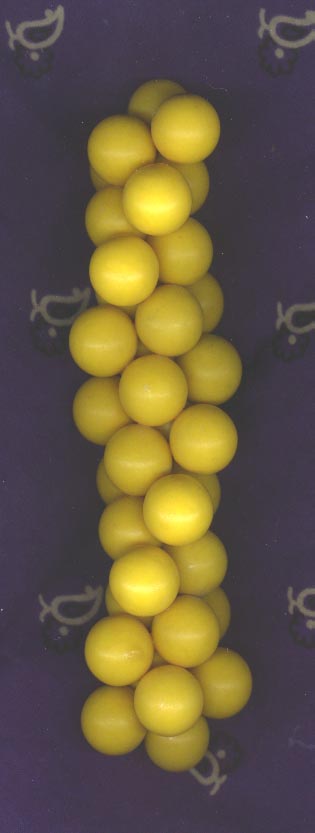

Here is a figure I came up with after studying the tetrahelix. This must have been some time before November 2, 1981, since that's when I started to analyze its geometry mathematically. It is fairly easy to construct with equal-diameter spheres or toothpicks. The tetrahelix is based on a figure of two tangent spheres which form the center of an arc of four other tangent spheres. In toothpick terminology, this is three face-bonded tetrahedra sharing a common edge. I wondered what I would get based on a figure with four face-bonded tetrahedra and this is what came out.
I call it a double tetrahelix since it can be interpreted as two tetrahelices bonded together. They share two common strands of spheres which are tangent all the way along the strand. Each helix has an unshared strand of spheres which has small gaps in it. The gap corresponds to Buckminster Fuller's "Unzipping Angle" (2π - 5⋅acos(1/3), or about 7.35610°) which is discussed in Section 934.00 of Synergetics. There and in the previous section (933.00) discussing the tetrahelix, Fuller draws a tantalizing correspondence between DNA and the tetrahelix, though I've never seen a double tetrahelix model constructed by him. It is an interesting and natural conjecture, but as yet I haven't seen a biochemist structurally verify this or describe any correspondence between the two. Certainly biochemists have shown a lot of interest in geodesics and tensegrity. This would be another good place for them to dip their oars into Fuller's work.
The "Double Tetrahelix" figure available in the Tensegrity Viewer is a "toothpick" version of this model. The green backbones of that figure have slightly more than unit-length segments reflecting the gap, while all the other segments are unit length. There is also a VRML model which tries to show the correspondence between the sphere model and a toothpick model.


